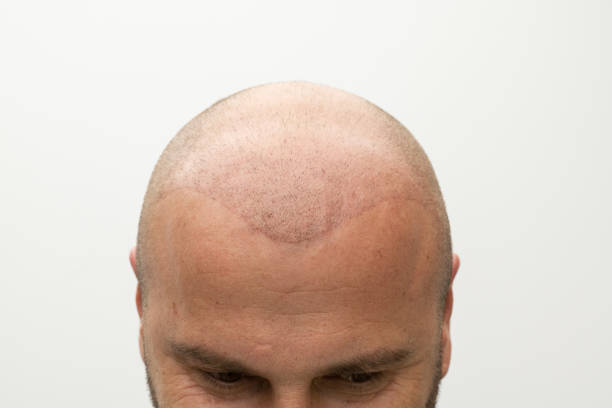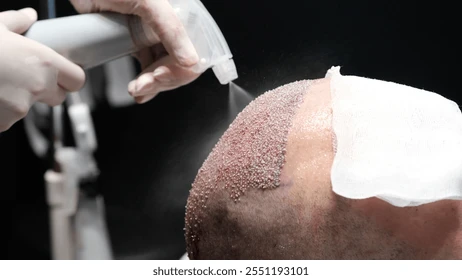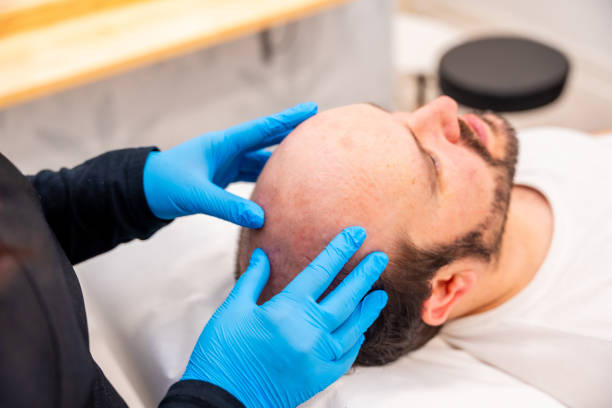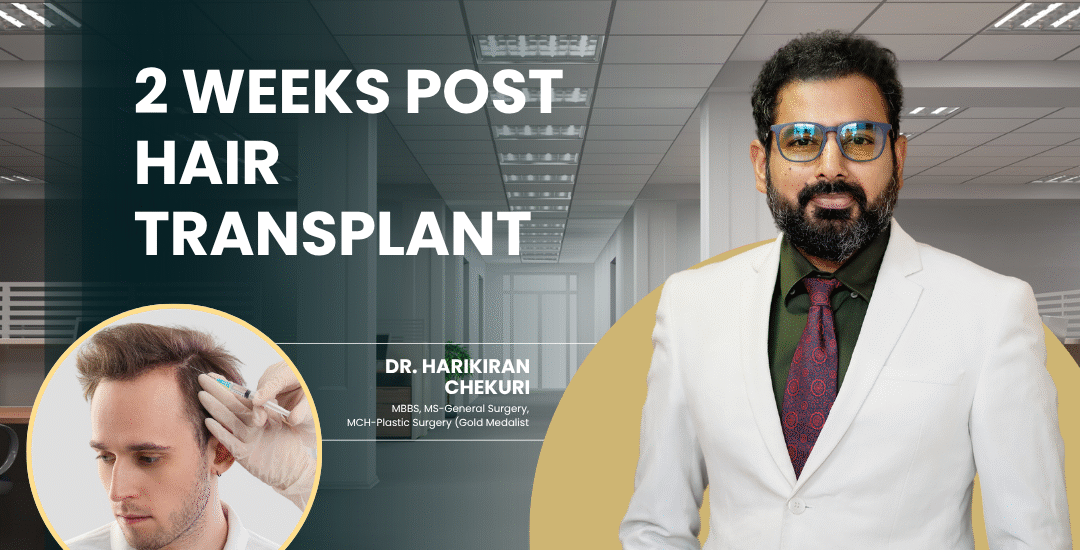A hair transplant is more than a medical procedure — it’s a personal journey toward restoring confidence, self-image, and happiness. It offers a lasting solution for those struggling with hair loss, helping them regain a natural, youthful appearance. However, the transformation doesn’t end with surgery; the post-operative phase plays a vital role in achieving the final result. At 2 weeks post hair transplant, patients often notice key changes such as mild shedding, scalp healing, and the settling of transplanted grafts.
Dr. Harikiran Chekuri, a distinguished plastic surgeon in Hyderabad, explains:
“By the two-week mark, your scalp enters a crucial healing phase. The grafts are stabilizing, tenderness is reducing, and patients begin to see early signs of recovery. It’s essential to follow the right aftercare routine to protect your long-term results.”
At Redefine Clinic, a centre of excellence for hair transplant in Hyderabad, every patient receives dedicated guidance through every stage of recovery. Led by Dr. Harikiran Chekuri with over 20 years of experience and 20,000+ procedures, the clinic is recognized for its precision, compassion, and patient-centric care. Whether you’re considering a hair transplant or want to ensure a smooth recovery, Redefine Clinic offers world-class expertise and trusted post-operative support to help you achieve natural, long-lasting results.
Wondering if discomfort should still linger at this stage? Let’s delve into how your scalp should be feeling two weeks into recovery.
Does the Scalp Hurt 2 Weeks Post Hair Transplant?

At this point, you’re likely well past the immediate post‑operative discomfort. That said, some mild sensitivity, tingling, or tenderness may still be present. The surgical sites (both donor and recipient) are healing; any pain should be minimal and steadily diminishing.
From clinical observations: by two weeks many patients report that any significant pain has resolved, though light soreness—or a feeling of tightness—is still normal. If you experienced notable swelling, throbbing pain or new sharp pain at week two, it’s worth a quick check‑in.
Curious about how your scalp should appear right now? Let’s explore the visual signs of healing and what’s completely normal.
How Does Scalp Look 2 Weeks Post Transplant?

Let’s look at what is typical—and what’s still in process—at the 2‑week point.
- The redness and swelling around recipient and donor sites should be largely gone or fading.
- Scabs/crusts from graft incisions are coming off naturally: it’s normal for many to crater off during or after a gentle wash.
- The newly transplanted hairs often begin to enter the “shedding/shock‑loss” phase. This means you may see hairs falling – but remember, the follicle remains, and this is part of the normal cycle.
- The donor area shows healing; any small pin‑wounds (in FUE) or strip‑scar (in FUT) will start to fade in visibility.
It’s essential to remember: while you may look close to normal, internally the grafts are still stabilising. A little tenderness, slight redness, or mild flaking is fine. If you see redness growing, pus, increasing pain or swelling, that calls for attention.
Worried whether your scalp looks as it should at this stage? Connect with an expert to evaluate your progress and seek expert guidance.
Not sure if you can finally return to your regular hair washing routine? Let’s discuss safe shampooing techniques and hygiene do’s and don’ts.
Is It Safe to Wash Hair Normally 2 Weeks After a Hair Transplant?

Yes—but with care. At the two‑week mark you can generally return to your gentle wash routine, but you still need to avoid aggressive scrubbing, strong jets of water, or shampooing techniques that disrupt grafts. According to recovery timelines, by week two you may be ready for a “normal” hair wash—but still with gentle measures.
Here’s a suggested safe approach:
- Use a mild, non‑medicated shampoo.
- Apply lukewarm water with minimal force; avoid directing a high‑pressure stream on the transplanted area.
- Pat dry with a clean towel; do not rub vigorously.
- Avoid hair dryers on high heat; use cool or low‑heat setting if you must.
If you follow these steps, you’ll maintain hygiene while keeping the grafts safe. Be patient: normalized washing without caution will come—but slightly later.
Worried that certain habits might damage your new grafts? Let’s dive into what you should still steer clear of during this crucial healing phase.
What Should I Avoid 2 Weeks After Hair Transplant?
At the two‑week milestone, many restrictions have lifted—but there are still smart precautions to optimise outcomes:
- Avoid heavy physical exertion that leads to excessive sweating, especially near the scalp. Although week two is safer, extreme workouts might still be best delayed.
- Avoid abrasive headwear or tight caps that press on the grafts or donor area.
- Avoid direct strong sun exposure to the scalp without protection—use a loose hat or shade when outdoors.
- Avoid scratching or picking at scabs or graft sites. Let the natural healing process take place.
- Avoid chemical hair treatments (dyes, perms) or heat styling that could stress the transplant zones prematurely.
- Avoid swimming (especially in chlorinated pools) unless cleared by your surgeon—it can disturb grafts or introduce infection risk.
By remaining cautious with these, you’re giving your transplant the best environment to succeed.
Feeling unsure if something is going as planned? Let’s uncover the red flags that signal it’s time to speak with your doctor.
When to Consult a Surgeon

While many two‑week recoveries go smoothly, it’s important to know when to seek your surgeon’s advice. Contact your surgeon or clinic if you experience:
- Increasing pain, swelling or warmth at the recipient or donor site (may indicate infection).
- Pus, active bleeding, or crusts getting worse instead of better.
- New and persistent numbness, tingling or loss of sensation beyond what’s expected.
- Large patches of redness or irregular healing, or if you simply feel “something is not right”.
At Redefine, Dr Harikiran Chekuri, a highly regarded hair transplant surgeon in Hyderabad, offers post‑operative follow-ups to ensure healing is on track. Taking action early helps prevent complications and secures your long‑term result.
Conclusion
By 2 weeks post hair transplant, you’re well on your way to achieving the fuller, natural hair you’ve been hoping for. At this stage, discomfort is minimal, healing is progressing well, and the foundation for new hair growth has been established. Remember, the road to recovery continues beyond the two-week mark, with regular care and attention helping ensure the best results.
Under the guidance of a skilled expert in hair restoration, such as Dr. Harikiran Chekuri, you’ll receive the support needed for a smooth recovery and the best possible outcome. If you’re seeking the best hair transplant in Hyderabad, trust a team that values precision, safety, and personal care above all else.
Every great hair transformation begins with the right recovery plan. Talk to a leading hair transplant professional to stay on track with your results.
Frequently Asked Questions
Can I see hair growth at 2 weeks post hair transplant?
Typically, no—not yet obvious growth. The transplanted hairs often shed first before the new growth begins.
Is it normal to experience shedding at this point?
Yes—what’s called “shock loss” is common in this phase and is part of the normal process.
Do I still need to sleep with my head elevated two weeks after a hair transplant?
At two weeks mostly you are allowed to resume normal sleeping positions, but confirm with your surgeon.
Can I wear hats or headgear?
Yes gently, but ensure the cap is loose and clean; avoid pressure on grafts or donor sites.
What signs suggest my grafts are not taking?
Persistent redness, crusting beyond 14 days, unexpected pain, or lack of healing may warrant investigation.
Reference
https://www.clinicspots.com/blog/hair-transplant-after-2-weeks-recovery-shedding-care-tips
https://www.plasticsurgery.org/cosmetic-procedures/hair-transplantation-and-restoration/recovery
Disclaimer: The information shared in this content is for educational purposes and not for promotional use.



